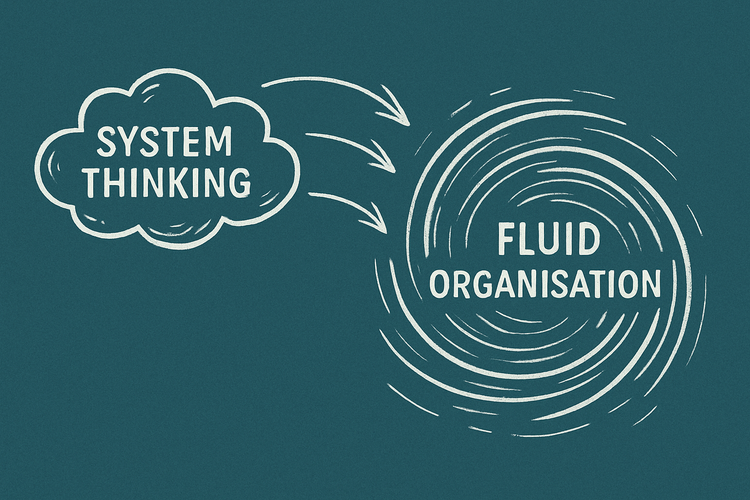Measuring Turbulence in the Fluid Organisation with Org Re
This article unpacks the concept of Org Re, how it works inside the Fluid Organisation, and why it matters as a diagnostic tool for engineering, platform, and product teams alike.
Systems Thinking in the Fluid Organisation
This article maps concepts from systems thinking, especially those articulated by Donella Meadows, onto the architecture of the Fluid Organisation. The goal is not to admire the model but to sharpen it.
How the Fluid Organisation Model Aligns Innovation, Reuse, and Scale
Speed alone does not scale. Alignment alone does not create coherence. Organisations today suffer not from slowness, but from signal decay, duplicated logic, fragile reuse, and an inability to evolve without entropy. The Fluid Organisation was designed to solve exactly that.
Fluid Org: Five Flywheel Patterns That Restore Motion Without Chaos
In the Fluid Organisation, the Flywheel plays a critical role: it absorbs signal, filters chaos, and enables convergence across layers. But the Flywheel is not a single team or method. It is a pattern .
Measuring Motion: A Metric Framework for the Fluid Org Model
To understand, debug, and evolve a Fluid Organisation, we must be able to observe its health. That requires metrics.
From Chaos to Coherence: How the Fluid Org Flywheel Reduces Organisational Entropy
Modern organisations do not suffer from a lack of ideas or energy. What they suffer from is signal decay, duplicated effort, and structural noise. As organisations scale, the cost of change does not come from lack of speed, but from increasing disorder. The problem is not slowness but entropy.









